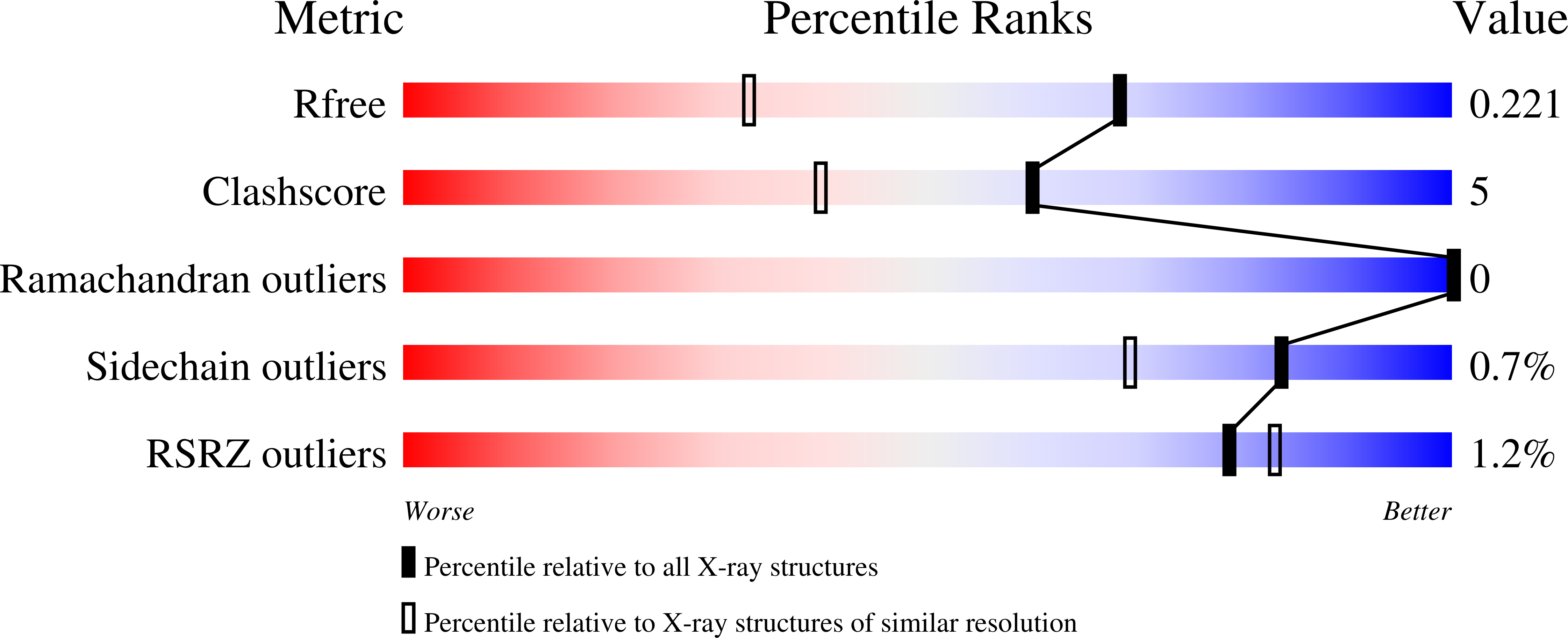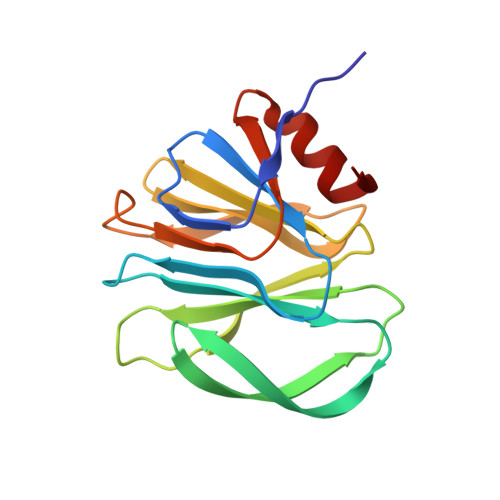Glycan recognition in globally dominant human rotaviruses.
Hu, L., Sankaran, B., Laucirica, D.R., Patil, K., Salmen, W., Ferreon, A.C.M., Tsoi, P.S., Lasanajak, Y., Smith, D.F., Ramani, S., Atmar, R.L., Estes, M.K., Ferreon, J.C., Prasad, B.V.V.(2018) Nat Commun 9: 2631-2631
- PubMed: 29980685
- DOI: https://doi.org/10.1038/s41467-018-05098-4
- Primary Citation of Related Structures:
5VX4, 5VX5, 5VX8, 5VX9 - PubMed Abstract:
Rotaviruses (RVs) cause life-threatening diarrhea in infants and children worldwide. Recent biochemical and epidemiological studies underscore the importance of histo-blood group antigens (HBGA) as both cell attachment and susceptibility factors for the globally dominant P[4], P[6], and P[8] genotypes of human RVs. How these genotypes interact with HBGA is not known. Here, our crystal structures of P[4] and a neonate-specific P[6] VP8*s alone and in complex with H-type I HBGA reveal a unique glycan binding site that is conserved in the globally dominant genotypes and allows for the binding of ABH HBGAs, consistent with their prevalence. Remarkably, the VP8* of P[6] RVs isolated from neonates displays subtle structural changes in this binding site that may restrict its ability to bind branched glycans. This provides a structural basis for the age-restricted tropism of some P[6] RVs as developmentally regulated unbranched glycans are more abundant in the neonatal gut.
Organizational Affiliation:
Verna and Marrs McLean Department of Biochemistry and Molecular Biology, Baylor College of Medicine, Houston, TX, 77030, USA.















